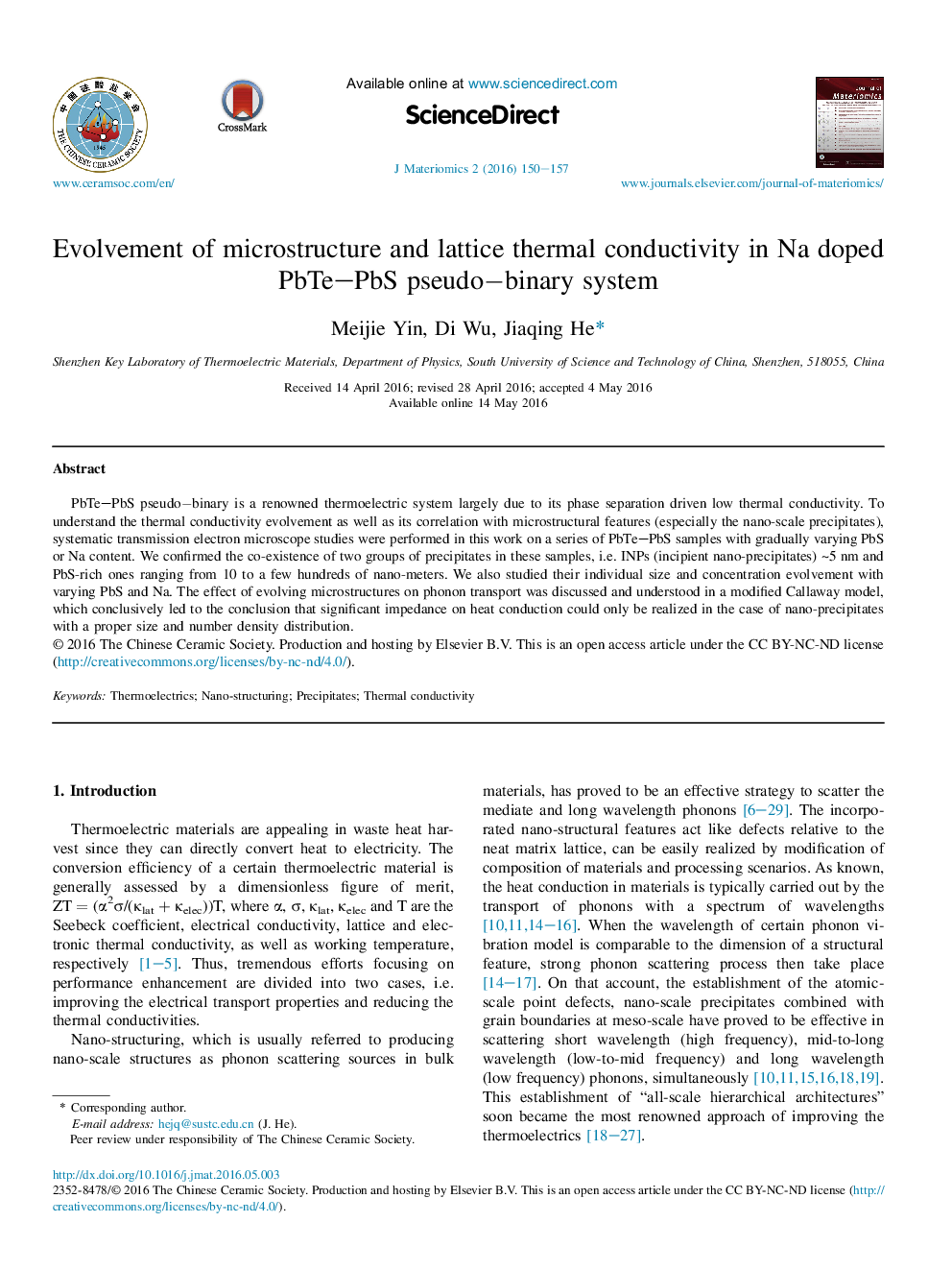| Article ID | Journal | Published Year | Pages | File Type |
|---|---|---|---|---|
| 1515131 | Journal of Materiomics | 2016 | 8 Pages |
PbTe–PbS pseudo−binary is a renowned thermoelectric system largely due to its phase separation driven low thermal conductivity. To understand the thermal conductivity evolvement as well as its correlation with microstructural features (especially the nano-scale precipitates), systematic transmission electron microscope studies were performed in this work on a series of PbTe–PbS samples with gradually varying PbS or Na content. We confirmed the co-existence of two groups of precipitates in these samples, i.e. INPs (incipient nano-precipitates) ∼5 nm and PbS-rich ones ranging from 10 to a few hundreds of nano-meters. We also studied their individual size and concentration evolvement with varying PbS and Na. The effect of evolving microstructures on phonon transport was discussed and understood in a modified Callaway model, which conclusively led to the conclusion that significant impedance on heat conduction could only be realized in the case of nano-precipitates with a proper size and number density distribution.
Graphical abstractMulti-scale phases including larger PbS-rich phase, smaller INP (incipient nano-precipitate) and S alloying element were found coexisting in the PbTe matrix of Na doped PbTe-PbS binary materials with vary PbS and Na concentrations. The lowest lattice thermal conductivity that was produced in the 2 mol% Na doped (PbTe)0.88(PbS)0.12Na0.02 material was elucidated by the micro structural analysis and confirmed by the Callaway's model. It has come to concluded that the larger precipitate and point defect from the S alloying element make major and synergetic contributions to the heat impendence other than the U and N processes.Figure optionsDownload full-size imageDownload as PowerPoint slide
